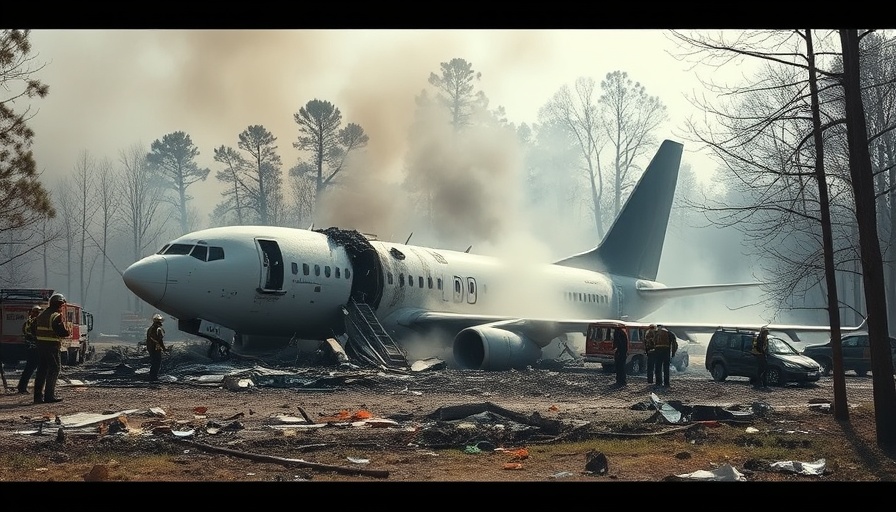
Tragedy in the Skies: Air India Flight to London Crashes
In a heartbreaking incident that has shocked the aviation community, an Air India flight carrying 242 individuals crashed shortly after takeoff from Ahmedabad. The tragic news has drawn widespread reactions and concerns regarding aviation safety standards, especially in light of recent trends in air travel worldwide.
The Flight and Immediate Aftermath
The flight was bound for London, but it faced catastrophic failure moments after departure. Rescue teams were deployed rapidly, and officials reported casualties exceeding 240. The focus now shifts to the investigation, with early reports citing possible technical malfunctions or human error. Witness testimonies describe a terrifying scene, with families and friends left in shock as they awaited news about their loved ones.
A Complex Picture of Aviation Safety
This incident raises critical questions about the safety measures in place for commercial aviation, particularly within one of the most populous countries in the world. According to aviation experts, as air travel increases, so do concerns about regulatory compliance and maintenance practices. Recent trends in air travel have seen an increase in the number of flights, stretching resources and oversight capabilities. Governments must ensure strict adherence to safety regulations as air traffic continues to rise.
Learnings From Past Accidents
This event recalls past aviation disasters and highlights the need for an ongoing dialogue about safety in the skies. Analyzing previous incidents can provide valuable insights. For instance, the aviation community learned significant lessons from the Air France Flight 447 disaster in 2009, where technical failures coupled with human error led to tragic consequences. It's imperative that industry leaders and regulators learn from these lessons to prevent similar events.
Impact on Families and Community
Beyond the technical considerations, we must also consider the human impact of such tragedies. Family members of the victims face immeasurable grief, which is further compounded by uncertainty surrounding the details of the crash. Community support is vital in these situations; local and national organizations often rally around those affected to provide assistance, counseling, and emotional support. Survivors and families should not feel isolated in their pain.
Future Predictions and Insights into Aviation
As the investigation unfolds, forecasts suggest that there may be additional regulatory changes within the aviation sector. Increased scrutiny of aircraft maintenance practices, pilot training, and overall industry standards is expected. Future technology advancements may also play a role in improving safety, such as enhanced navigation systems and automated controls that aim to assist pilots during stressful situations. Similarly, advancements in flight simulator training could lead to improved responses to emergency situations.
Conclusion: Navigating the Path Forward
While the tragedy of the Air India flight crash will leave a permanent mark on those affected, it also serves as a critical reminder of the importance of safety in aviation. Industry leaders must act swiftly to implement measures that protect passengers and crew, thoroughly investigate the cause of the crash, and commit to transparency. As the aviation world mourns, the focus should shift to ensuring that no such tragedy occurs in the future. It is essential for all stakeholders to unify efforts to promote safety in aviation.
 Add Row
Add Row  Add
Add 



Write A Comment